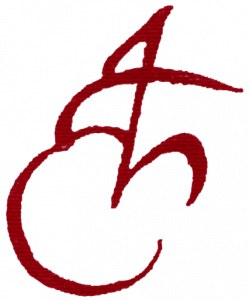Emendations
Emendations and Errata
The period of time between my calling the manuscript “finished” and seeing it in book form was considerably longer than I expected it to be. Once it was printed, but before it was made generally available, it was read by several Renaissance scholars and other colleagues who made further observations on the signatures, some that seem – to my great delight – so valuable they need to be shared. To my dismay, a few errors were noted that had somehow slipped past, but even some of those have turned out to be interesting, so I have decided to mention them here, along with the more recent observations. I plan to update this section as needed and invite any readers of What’s in a Name who are so inclined to send comments or observations to me at my e-mail address so they can be shared with other readers of the site.
- Introduction
- The Louvre David Sheet
- The Lions’ Mouths (see Articles & Essays)
- Che Sera…
- B-i-i-n-g-o!!
- Michelangelo in Turkey
Introduction. I had made a conscious decision not to discuss what seems to be the most purely Tuscan spelling of Michelangelo’s name because, as far as I can determine, there are no surviving examples of his use of it. Evidently, however, I made an unconscious decision to mention it – since I did so by accident at the top of page 6. Beginning at the end of the third line, the text should read thus: “The great majority of his signatures are as Michelagniolo…” without the additional N. Michelangniolo is in fact found numerous times in his correspondence but on letters to him (not from him), most of them, unsurprisingly, from older Florentines familiar with that spelling.
The Louvre David Sheet. Professor Enrico Mattioda of Torino has pointed out still another level of play in this amazing signature, one that constitutes an almost breathtaking combination of verbal and visual punning. I suspect Michelangelo noticed the opportunity for this word/image play after he had started signing his name.
Having begun signing his name in a way that makes apparent the agnio (Tuscan for “lamb,” with its associations to the shepherd boy David) component of his name, he then adds the lo – a fifth syllable – in a way that makes it resemble a calipers. But at some point he realized that by adding another calipers (this one inverted) he could effectively add a sixth syllable (sillaba sesta) to his signature. While another word is more commonly used today for calipers, the word Michelangelo himself used for the tool was… seste.
The Lions’ Mouths. (Moved to Articles & Essays)
Che Sera… Readers will recall how Michelangelo devised a che that would look well in his new corsiva hand and will remember as well how very often the issue of personal identity comes up in critical examinations of his life. The style of writing he learned as a boy was mercantesca Fiorentina (Florentine merchants’ hand), sometimes referred to as mercantesca antica. I have come to believe that the che – both in his signature and elsewhere in his writing – became something of a logo for him, especially since no-one else used such an abbreviation when writing in corsiva (“cursive”) style, effectively identifying himself as Michelangelo the Florentine. (We recall how pointedly he proclaimed that identity in the Rome Pietà signature.) I have also shown that, except for the often reproduced signature in the back of his copy of Colonna’s poems, he abandons the che in the late 1520s, never to take it up again.
What I have come to realize more fully of late is that his abandoning of the che corresponds more-or-less exactly to his “abandoning” of Florence, following the horrible years of the late 1520s, with their plague, famine, political upheaval, and personal losses. He was turning his attention more and more to Rome, where he would eventually move in 1534, never to return. Perhaps he decided, as he began to accept more commissions in Rome and to identify more closely with friends there and with the artistic life of that city, that the continued use of his Florentine logo was no longer such a good idea.
Also in this chapter, an error. On page 68, the reference to The Older Che should cite page 82, not page 88.
B-i-i-n-g-o!! I somehow managed to provide an incorrect date for the letter quoted on page 111. Thus, the fourth sentence of the second paragraph should begin as follows:
“And we read with considerable amusement (if also some sympathy for the poor young man) a letter from June 1546 to his well meaning but ever-bumbling nephew…”
I regret the error.
Michelangelo in Turkey. Despite the many strange and eye-catching legitimate spellings (one way or another) of his name,
Miccelagniolo
is, as we discovered, not one. But Professor Mattioda, with his vast knowledge of Tuscan and of regional expressions common in the period, suspects that Michelangelo may be playing yet another of his sly word games, alluding with his micce to the vernacular Tuscan/Umbrian miccio (“ass” or “donkey”). If that suggestion is correct, this enigmatic signature might be read as
Your Donkey-angel in Turkey.
Considering other examples of wordplay of this sort, I would not be surprised if this were his intention; I have always suspected he was alluding to something.
Minutiae
On page 240, in the last entry on the page (Baldini), there should be a comma after Marco Serra Tarantola, not a period.
On page 258, source 63, there should be a comma after the close parenthesis, before the page number.



Connect with Vanderbilt
©2024 Vanderbilt University ·
Site Development: University Web Communications